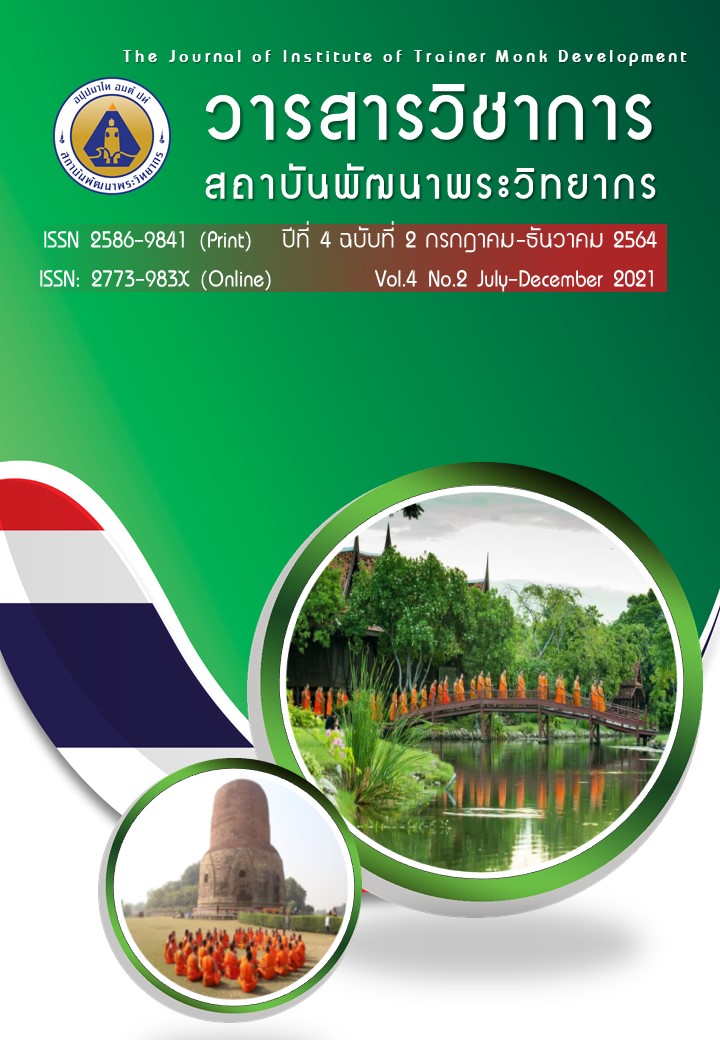Making a will on property in Buddhism
Main Article Content
Abstract
This paper is to study the provisions related to the Sangh’s properties in Buddhist scriptures, and to analyze the act of property-will in Buddhism personally and collectively, by mainly studying from documents. The study was found that the provisions of Sangha’ property is of rules or regulations, prescribed by the Buddha as the Buddhist offenses (Buddha-Ãnã)—the rules for Sangha’s administration generally called as ‘Phra Vinaya,’ e.g., the provision of arm-food, robe, shelter, medicine and others, which are appropriate to the ascetic’s consumption both personal and collective properties, dividing into two kinds: 1) the small materials (lahu bhandha), such as arm-blow, robe, shelter, and medicine, and 2) the big materials (garu bhandha), such as land, monastery property, monk's cell, chapel, and pavilion. Will is the last order that was intended before the death of the willer as to properties or various activities, judging that who would obtain the properties once monk dies, by mainly attaching on the will, if the will is not clearly identified, according to the law, it is judged into two cases: 1) property prior ordination—once monk dies, all properties would fall to the statutory heir, and 2) the property took place during monkhood, once monk dies, all properties would fall to the native monastery (monastery-subjection) of that monk, except the will had been made, or sold out during he was alive.
Article Details
บทความที่ได้รับการตีพิมพ์เป็นลิขสิทธิ์ของวารสารวิชาการสถาบันพัฒนาพระวิทยากร
ข้อความที่ปรากฎอยู่ในบทความที่ได้รับการตีพิมพ์ในวารสาร ถือเป็นความรับผิดชอบของผู้เขียนบทความ และข้อคิดเห็นนั้นไม่ถือว่าเป็นทัศนะและความรับผิดชอบของกองบรรณาธิการวารสารวิชาการสถาบันพัฒนาพระวิทยากร
References
ธรรมรัตน์ สงวนพฤกษ์. (2546). “การตกทอดซึ่งทรัพย์สิน สิทธิ หน้าที่ และความรับผิดชอบของพระภิกษุที่มรณภาพ”. วิทยานิพนธ์นิติศาสตรมหาบัณฑิต. คณะนิติศาสตร์: มหาวิทยาลัย ธรรมศาสตร์.
นัยนา เกิดวิชัย. รศ., พ.ต.อ.หญิง. (2548). ประมวลกฎหมายแพ่งและพาณิชย์. นครปฐม: สำนักพิมพ์นิตินัย.
บำรุง ตันจิตติวัฒน์. (2546). คำบรรยายประกอบการฝึกอบรมวิชาว่าความ. กรุงเทพมหานคร: บริษัท บพิธการพิมพ์ จำกัด.
ปลื้ม โชติษฐยางกูร. (2520). คำบรรยายกฎหมายคณะสงฆ์. กรุงเทพมหานคร: โรงพิมพ์ประยูรวงศ์,
พระธรรมกิตติวงศ์ (ทองดี สุรเตโช). (2551). พจนานุกรมเพื่อการศึกษาพุทธศาสน์ ชุดคำวัด. พิมพ์ครั้งที่ 3. กรุงเทพมหานคร: ธรรมสภาและสถาบันบันลือธรรม.
พระธรรมโกศาจารย์ (พุทธทาสภิกขุ). (2549). โอวาทคำสอนสำหรับพระภิกษุผู้บวชใหม่.กรุงเทพมหานคร: ธรรมสภาและสถาบันบันลือธรรม.
พระธรรมปิฎก (ป.อ. ปยุตฺโต). (2543). พจนานุกรมพุทธศาสน์ ฉบับประมวลศัพท์. พิมพ์ครั้งที่ 9.กรุงเทพมหานคร: โรงพิมพ์มหาจุฬาลงกรณราชวิทยาลัย,
มหาจุฬาลงกรณราชวิทยาลัย. (2539). พระไตรปิฎกภาษาไทย ฉบับมหาจุฬาลงกรณราชวิทยาลัย. กรุงเทพมหานคร : โรงพิมพ์มหาจุฬาลงกรณราชวิทยาลัย.
สถาบันส่งเสริมและพัฒนาการพระศาสนา. (2548). พระราชบัญญัติคณะสงฆ์ พ.ศ 2505 และแก้ไขเพิ่มเติม พระราชบัญญัติคณะสงฆ์ (ฉบับที่ 2) พ.ศ.2535. พิมพ์ครั้งที่ 2. กรุงเทพ มหานคร: โรงพิมพ์สำนักงานพระพุทธศาสนาแห่งชาติ.
สมเด็จพระมหาสมณเจ้า กรมพระยาวชิรญาณวโรรส. (2543). วินัยมุข เล่ม 2. พิมพ์ครั้งที่ 31.กรุงเทพมหานคร: มหามกุฏราชวิทยาลัย.


